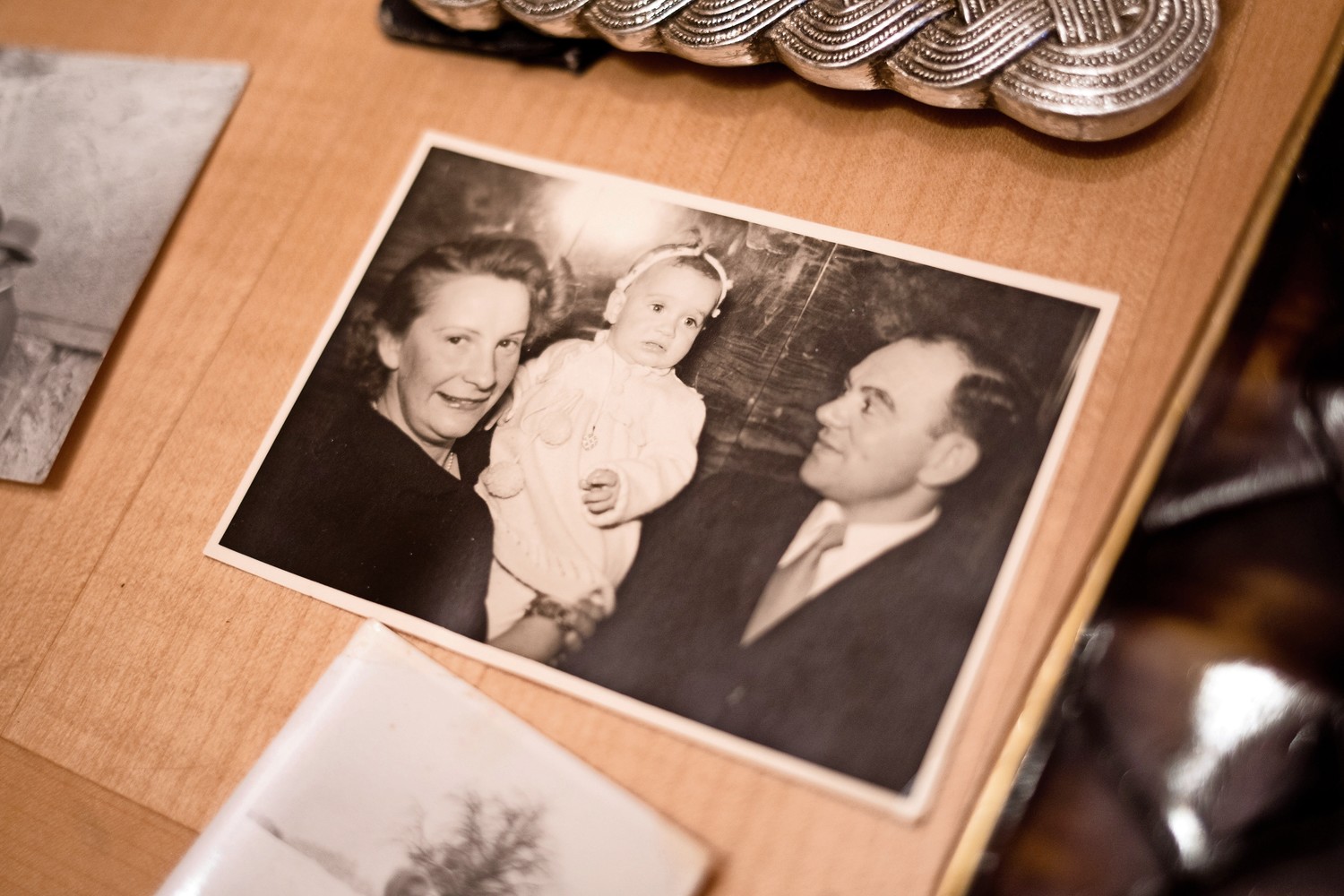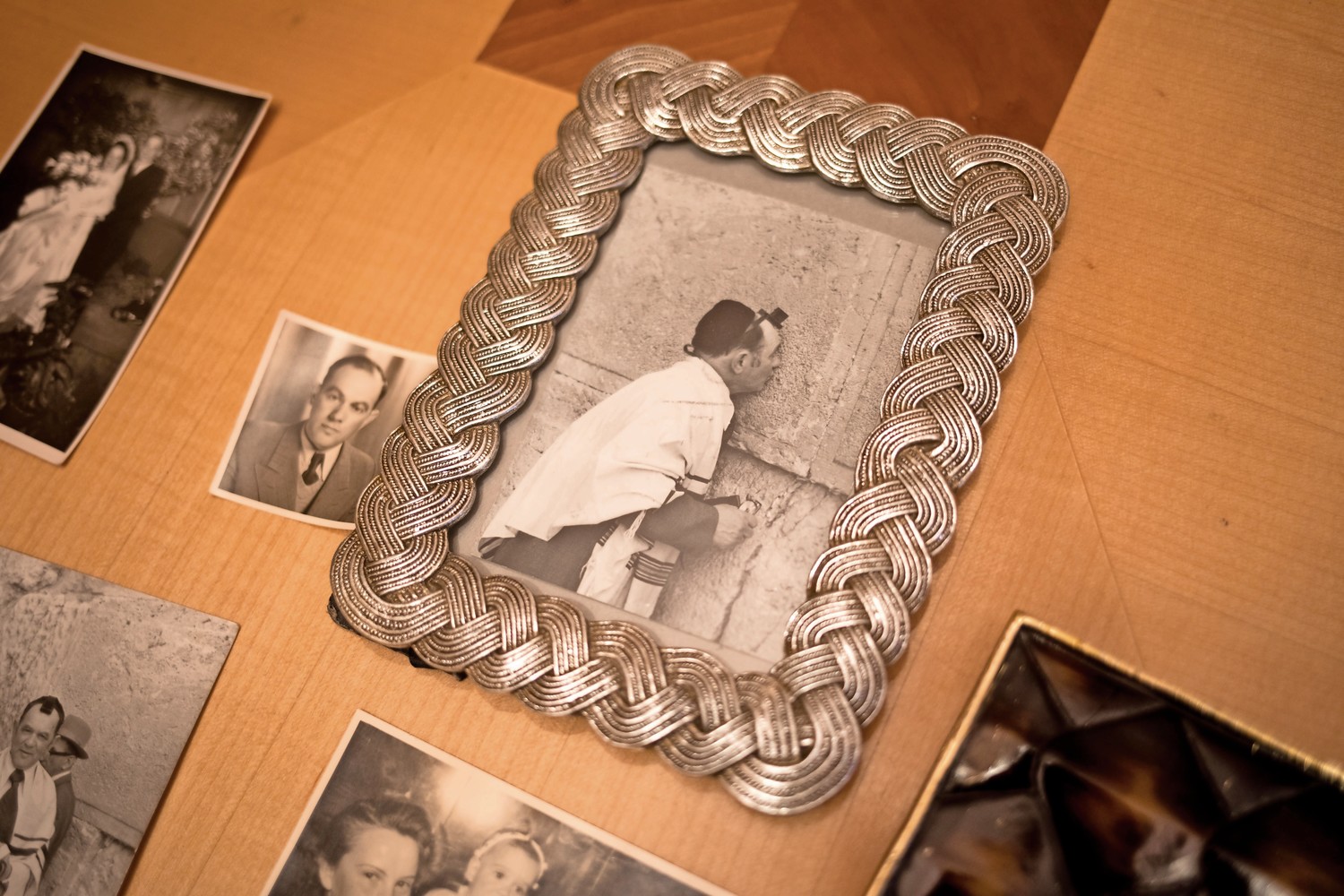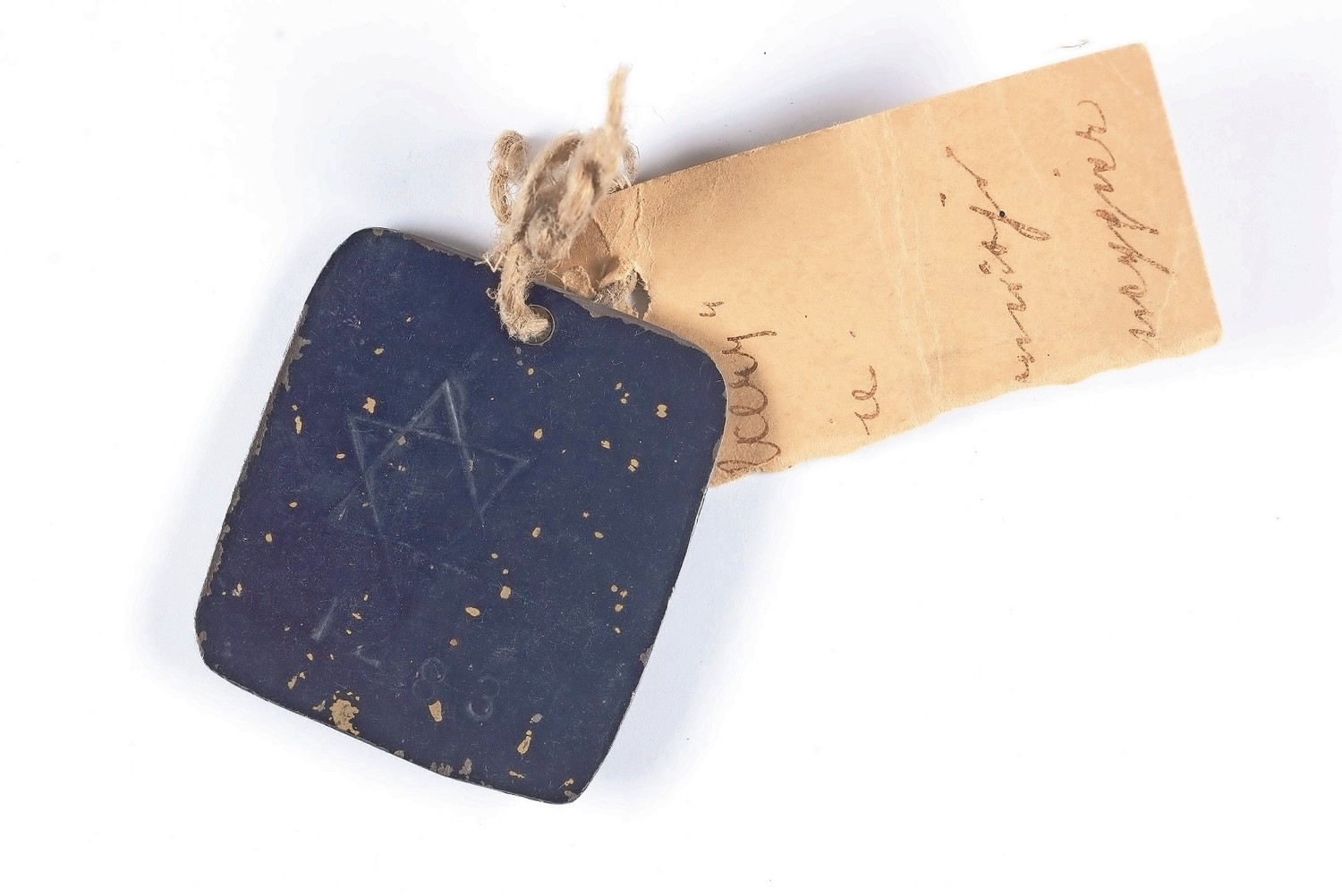Holocaust survivor’s prison tag, grim tales survive World War II
Yechiel Kamioner’s life changed forever in 1939.
He was 19 when German soldiers bombed his Wielun, Poland, home. Soon after, he was placed in a Nazi concentration camp and forced into slave labor for six years.
The numbers “1283” and a Star of David was carved into his metal prison tag so he could be identified as both a captive and Jew.
When World War II ended, Kamioner journeyed to America with his wife and daughter, but among the many things he left behind, Kamioner’s prison tag was among them. Although he would never set eyes on the scrap of metal again, his daughter, Helene, has thanks to the work of Israel’s official Holocaust memorial, Yad Vashem.
“I think if he were alive, he would cry,” said Helene, now 68. “I mean wouldn’t you if you found something from your history?”
Yechiel was 92 when he died in 2002. He loved Riverdale for its strong and supportive Jewish community, Helene said. He had married his wife, Chava, in Munich after the war, had Helene, and then moved to the United States with some help from the Hebrew Aid Society. They first settled in northern New Jersey where Yechiel worked as an egg dealer, before eventually moving to Riverdale.
While Yechiel would sometimes talk about what he went through during the war, how he was beaten and starved, Helene never imagined something tangible from that past — his prison tags — would resurface. That is until Evgeny Rozin contacted her. An archivist who works in Yad Vashem’s artifact section, Rozin discovered the connection between the discovered tag and a slave laborer who had worked in the Hasag Pelcery ammunition factory in the ghetto of Czestochowa.
Yechiel and his entire family were shipped to Czestochowa, but he and his niece were the only ones to leave alive. The rest of his family was killed in a gas chamber.
“I believe that my father considered his life and the fact that he was spared … a miracle,” Helene said. “My father was an extraordinarily positive man, and he believed he would come through this experience.”
The average life span for a worker at the Hasag factory labor camp was two months, and more than 50,000 Polish Jews died during their time there. Those who did survive suffered from lice infestations, typhus, hypothermia and malnutrition.
Despite all this, Yechiel remained devout to his faith, Helene said. In the initial early morning bombing of his home, Yechiel ran out of the house, but not without grabbing his father’s religious artifacts first.
Yechiel was always open with his children about being a Holocaust survivor. And no matter where the family lived, he got along with everyone, Helene said. At home he kept their culture alive, spoke Yiddish, and from time to time, would bring up his ghetto experiences.
“He would romanticize his experiences in the labor camp in order to not scare us,” Helene said. “People would tell horror stories, and I don’t know if it was psychological for him, but he minimized the story and somehow made it sound like a novel. He wanted us to know about it, but he purposely didn’t want to burden us with horrifying history.”
Age and health prevents Helene from travel to Yad Vashem in Jerusalem to see her father’s tag in person. Although the thought of asking for the tag be sent to Riverdale has crossed her mind, Helene believes its best home is in Israel.
“I’m conflicted about bringing it home, and if it is home, what’s going to happen when I die?” she said. “It’ll only go back to Israel, and I think it should go back to Israel along with the other memorial artifacts. But I would like to touch it and feel it.”
Even abridged, Yechiel’s stories still deeply hit Helene. As she grew up and did her own research, through pictures and literature about Holocaust survivors, she internalized some of her father’s pain.
“I saw how horrible it really was and how unimaginable it was that he went through,” Helene said. “It affected me very profoundly.”
Knowing that his tag was found magnified the significance of the stories her father told, Helene said. The tag was something that could not be denied, especially by those few who claim the Holocaust never happened.
“It brings back some memories and some comfort, especially to those people who are still searching,” Helene said. “The tag and the museum is constant proof, and it keeps the memories of those who were lost together, and keeps their memory alive and burning.”











